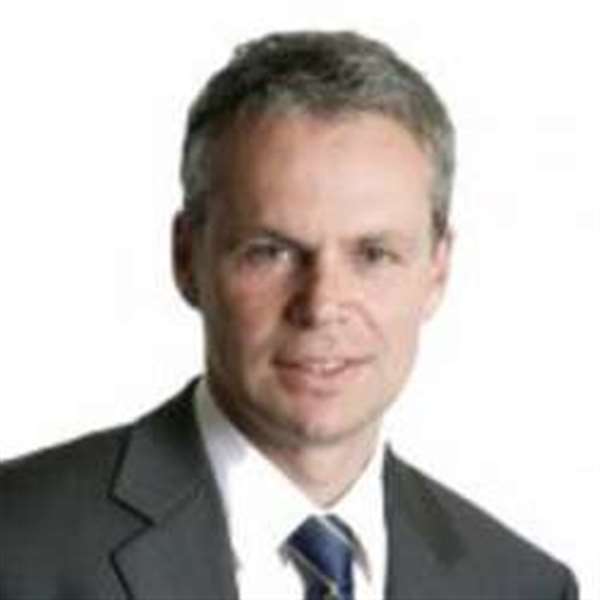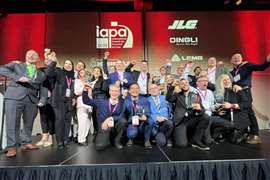Why are access OEMs changing their production plans?
21 October 2024
Localising production is key to the plans of access equipment manufacturers as they adapt to an ever more challenging international landscape.
Providing a local service for customers is nothing new but the concept is increasingly seen in the production footprint plans of OEMs. For example, Sinoboom is set to assemble MEWPs for the European market at the company’s production plant in Poland, which coincides with tariffs imposed on Chinese-produced equipment entering the EU. Although, plans to produce products for Europe at the Poland plant have been in place since 2021.
The group, with its headquarters based in Changsha, China, is adopting a ‘Europe for Europe’ approach, which will see it introducing full assembly of its scissor and boom lifts, destined for the EU market, at the Poznan-based facility. Although, plans to produce products for Europe at the Poznan plant have been in place since 2021.
The plans were announced at a dealer open day in July, aimed at reassuring Sinoboom’s European distributor and customer base that their businesses would not be affected long-term by the provisional tariffs that were introduced on 13 July.
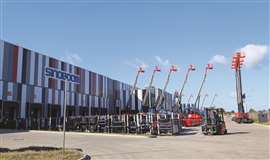 Sinoboom’s factory in Poland.
Sinoboom’s factory in Poland.
Sinoboom is in the process of appealing against its 56.1% tariff ahead of the final verdict by the European Commission in December this year.
As Richard Butler, the CEO of Sinoboom Europe, said, “Our strategy is clear; we’re here today, we’re here tomorrow and we’re here for the future. I cannot be any clearer than that.”
Under the rules imposed by the European Commission’s investigation, which is still underway, 60% of the total value of components of each MEWP must be produced outside China, with proven traceability.
Sinoboom’s plan is for 75% of the components assembled there to be procured from countries other than China. The plant in Poland currently produces scissors and boom lifts for the North American market ahead of its new factory in Mexico starting production this year.
Production in Poland
The 19,000 square metre facility was first established in 2021 and currently has 120 employees. Such is the challenge to employ local skilled labour, more than 50% of the shopfloor employees are originally from outside of Poland from a range of countries, including China, Ukraine, Southeast Asia and Columbia.
The factory, which has received a €10 million investment so far, has an annual capacity of 5,000 scissor lifts and 3,750 boom lifts, once in full use.
Sinoboom’s strategy there involves phasing in European products, combined with ongoing investment in the supply chain outside of China amounting to €60 million over three years. A European research and development team will also be established in Poznan to oversee localised products and final certification of CE equipment.
Components have already been sourced from a range of destinations, including drive motors and counterweights from India, batteries from Vietnam, basket assemblies and chassis from Poland, Deutz batteries from Germany, tyre assemblies from Belgium and a range of valves from Italy, to name a few.
The Poznan plant complement’s Sinoboom BV’s 12,000 square metre head office in Ridderkerk, Netherlands and the group’s head office in Changsha, China, as well as the company’s eight other locations globally and its 1,500 workers worldwide.
In a further addition to the European footprint, the company will set up a base in the UK, which will be centrally located, possibly in Derby.
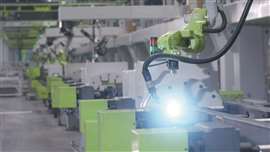 Soldering line in Zoomlion’s China plant
Soldering line in Zoomlion’s China plant
Zoomlion also believes that ultimately having a physical presence in major markets is the key to success. Ren Huili, General Manager of Zoomlion Intelligent Access Machinery, said, “If you really want to take over the overseas market, setting up facilities is the way.”
In the future Zoomlion Access will have three main production bases: one at its headquarters in Changsha, one for the American market, its current facility in Mexico, and one in Europe, which is yet to be established. “We will also set up the supply chain in these regions in accordance with production.”
“When I talk about globalization, it is not just about manufacturing in other countries, it also extends to the supply chain, logistics and transportation systems. Globalization plus localization will be the overseas strategy.”
What happens if tariffs are introduced to MEWPs produced in Mexico, which is widely anticipated. “We will have a factory in Europe and then maybe we will set up a facility in the USA too.”
Talking international
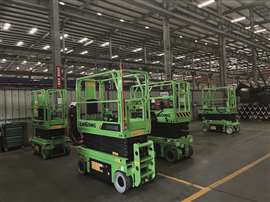 LiuGong scissors ready for shipment from China.
LiuGong scissors ready for shipment from China.
Li Ying, managing director of LiuGong Access, has a similar view. The company’s internationalization plan is split into three key target areas: Firstly, mature markets with no tariffs – those being the UK and Australia. Secondly, emerging markets, such as South America and Southeast Asia, and thirdly, mature markets with tariffs – notably the EU and USA.
LiuGong’s initial focus will be on the first two, through direct export. For the mature markets with tariffs, it has not yet been decided if the company will invest in standalone subsidiaries – this remains under discussion.
Li comments, “We started up our overseas business in 2023, and one thing we will not do is compete on price – that will destroy trust and revenue.”
One of advantages that LiugGong Access has is its parent company, which has a strong global presence, allowing it to easily stock parts. Indeed, access parts will be handled by LiuGong International.
In addition, it has an existing footprint of facilities in its own country and globally, which means it doesn’t have to make massive investments in infrastructure to get started. “We have been going so long that our fixed assets are fully owned.
“Our costs are much lower - so even a small number of sales leads to profit.”
Local view
Speaking to AI earlier this year Karel Huijser, JLG’s General Manager and VP for EAME, commented that its manufacturing footprint has become increasingly localised and targeted, not least through collaboration.
“Since I joined in 2012, JLG has invested in smaller manufacturing plants in the UK (low-level access products), and in Tonneins, France (Toucan lifts).
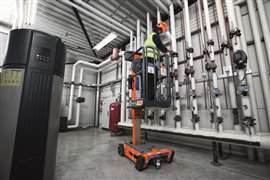 Power Towers adds to JLG’s line-up and localization plan.
Power Towers adds to JLG’s line-up and localization plan.
“These smaller plants were part of a larger strategic plan to fulfil region-specific needs and requirements. Both locations serve large markets for JLG equipment. Having smaller local facilities means we’re able to move more products and respond to changing customer demands quickly.”
JLG grown event larger with the acquisition by parent company Oshkosh of Spanish compact equipment manufacturer Ausa. It joins JLG in the group’s Access Division. Mahesh Narang, executive vice president Oshkosh Corp, said, “Combining our advanced technology capabilities and robust training, support and service infrastructures will allow us to better serve customers and enable targeted growth.
And JLG’s collaboration began in 2010 on four compact crawler models, which Hinowa produced and JLG sold under its name outside the EU. It has since extended geographically, and now includes a line-up of six compact crawlers and the two electric EC Series Gen II boom lift models, the EC450AJ and EC520AJ.
“The EC Series Gen II introductions are a perfect example of how a collaboration based on sharing the same values, and an equal passion about product design and development successfully works.”
Genie’s hope was that the company’s new manufacturing facility in Monterrey, Mexico will help ease some of Genie’s backlog.
 Genie is growing its global footprint
Genie is growing its global footprint
“Monterrey is continuing to ramp up, and more of the facilities coming online,” Genie’s President Josh Gross, said earlier this year, “We’ve been continuing to invest and expand the facility.”
Currently, Genie’s plant in Italy supplies Europe and North America, amongst other regions, and Gross says, the company is looking to increase its telehandler manufacturing capacities there. As for its facility in China, Gross says, “operations [there] have been successful for a long time.”
“We continue to look at how we build the right models with the right configurations to export them to key markets or sell domestically where there’s demand,” he says.
“So, we’re trying to be flexible with everybody and mix and match and move things around. But it varies quite a bit. I mean, we’re not seeing one specific spike anywhere over the other. We’re trying to ramp up everything as much as we can.”
STAY CONNECTED



Receive the information you need when you need it through our world-leading magazines, newsletters and daily briefings.
CONNECT WITH THE TEAM
